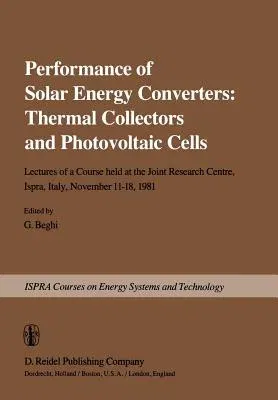Performance of Solar Energy Converters: Thermal Collectors and Photovoltaic Cells: Lectures of a Course Held at the Joint Research Centre, Ispra, ItalPaperback - Softcover Reprint of the Original 1st 1983, 21 May 2012

Qty
1
Turbo
Ships in 2 - 3 days
In Stock
Free Delivery
Cash on Delivery
15 Days
Free Returns
Secure Checkout
Part of Series
Ispra Courses
Print Length
527 pages
Language
English
Publisher
Springer
Date Published
21 May 2012
ISBN-10
9401198152
ISBN-13
9789401198158
Description
Product Details
Book Edition:
Softcover Reprint of the Original 1st 1983
Book Format:
Paperback
Country of Origin:
NL
Date Published:
21 May 2012
Dimensions:
24.41 x
16.99 x
2.74 cm
ISBN-10:
9401198152
ISBN-13:
9789401198158
Language:
English
Location:
Dordrecht
Pages:
527
Publisher:
Series:
Weight:
843.68 gm

